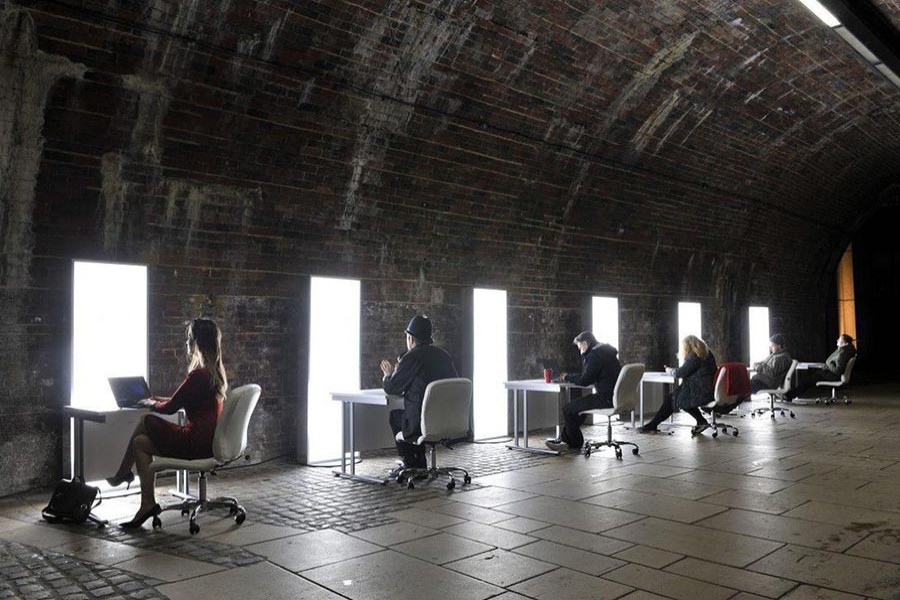Poor lighting often gets overlooked in the workplace, as we talk about mental health and well-being, and the focus is firmly on creating happier and healthier workplaces. But bad lighting is associated with a range of ill-health effects, both physical and mental, such as eye strain, headaches, fatigue and also stress and anxiety in more high-pressured work environments. As we spend much of the day in artificial lighting, there is evidence that the lack of natural sunlight has an adverse effect on the body and the mind, and can result in conditions such as seasonal affective disorder (SAD).
As we navigate the darkest (and shortest days) of the year, 40 per cent of office workers are struggling to work in poor lighting every day. This has a negative effect on their productivity and wellbeing - according to a new research report, looking at the impact of lighting in the workplace. This is a recent research report by the UK company Staples, where an online survey of 7,000 office workers was conducted in October 2018. The research sample consisted of a sample of desk-based office workers from ten European countries including: United Kingdom (2,000, with 302 in London), Germany (1,000), France (500), Netherlands (500), Sweden (500), Norway (500), Spain (500), Italy (500), Portugal (500) and Finland (500).
80 per cent of office workers, said that having good lighting in their workspace is important to them, and two-in-five (40 per cent) are having to deal with uncomfortable lighting every day. A third (32 per cent) said better lighting would make them happier at work. However, when access to natural sunlight is so limited in the winter, many are feeling stressed and suffering from seasonal affective disorder (SAD), and often spend long hours at their desks which is sometimes their only access to light during the day. The results have also shown that 25 per cent of the surveyed are frustrated at having to deal with poor lighting in their workplaces.
Often just 13-15 mins of exposure to natural light are enough to trigger the release of endorphins or "happy hormones". Dr Joe Taravella, a supervisor of pediatric psychology at NYU Lagone Medical centre said that SAD “affects anywhere from 5 per cent to 10 per cent of the population, which is a huge proportion of the population suffering from clinical levels of depression for up to a quarter of the year.
Another research concludes that there is a strong relationship between workplace daylight exposure and office workers' sleep, activity, and quality of life, according to a report by Forbes.
There are no statutory workplace lighting levels in the UK. Regulation 8 of the Workplace Health, Safety and Welfare (WHSW) simply requires that lighting at work is "suitable and sufficient" and that, where possible workplaces are lit by natural light. The emphasis on natural lighting and other related research reflects the consensus that daylight is the best form of light. But, in parts of the northern hemisphere, daylight by itself will not provide sufficient luminance throughout a working area. This means that "sufficient and suitable" lighting usually needs a combination of natural and artificial lighting, and especially artificial lighting that can be personalised as per the activity, function and individual requirements, and those that can imitate natural daylight.
The research by Staples recommends providing SAD lamps to employees, and to have cold-tone lighting with high luminance in the mornings for maximum productivity. In this research report, 68 per cent of the surveyed workforce admitted that they would feel more valued by their employers if they considered their health and well-being and invested in suitable lighting.


